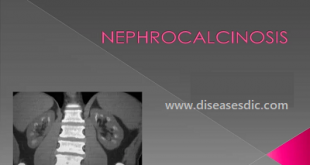Definition
Necrotising fasciitis is a potentially life-threatening bacterial infection that consists of rapidly progressing necrosis of fascia and subcutaneous fat that eventually results in necrosis of the overlying skin and muscle. The most rapidly progressing type of necrotising fasciitis is Group A streptococcal infection, also known as flesh-eating bacteria. Necrotising fasciitis can also involve microbial infections with a singular bacterium (monomicrobial) or a combination of bacteria (polymicrobial). Necrotising fasciitis can occur due to several reasons (traumatic and non-traumatic) and in a variety of patient populations. Some conditions have been found to predispose patients to the risk of infection. Most of these conditions cause immunosuppression and include diabetes, malignancy, drug abuse, and chronic renal disease.
The progression of the infection begins with the introduction of bacteria to the site and typically a result of trauma to the skin, however, trauma is not a necessary component. Once the infection is seeded locally, the bacteria spreads through deep fascial planes causing widespread tissue damage and infection. The spread of bacteria can cause ischemia to the area due to thrombosis occurring in blood vessels which can eventually result in gangrene.
Epidemiology
The annual incidence of NF is estimated at 500–1,000 cases annually, and its prevalence globally has been reported to be 0.40 cases per 100,000 population. It is seen to have a predilection for men, with a male-to-female ratio of 3:1; this ratio is mainly correlated with the increased incidence of Fournier’s gangrene in men. The disease affects all age groups, although middle-aged and elderly patients (over 50 years of age) are more likely to be infected. The median mortality ratio of NF is a controversial issue. In their review of the literature, Goh et al. concluded that the median mortality ratio was 21.5%. However, its range in the literature is extensive, varying from 8.7 to 76%. In regard to NF of the extremities, the mortality rate is slightly lower than that recorded for abdominal and perineal infections. Patients with Fournier’s gangrene that has not spread to the abdominal wall tend to have a better survival. As a general rule, without treatment, the mortality rate approaches 100%. Anaya et al. have demonstrated that infection of the lower extremities is the most common site of NF (57, 8%), followed by the abdomen and the perineum. NF of the upper limbs is rare compared to that of the lower limbs.
Types of necrotising fasciitis
There are three subtypes of necrotising soft tissue infection (NSTI):
- Type I
- Type II
- Type III
Type I NSTI, typically involving the torso and perineum, results from a polymicrobial infection usually including group A streptococci (eg, Streptococcus pyogenes) and a mixture of aerobic and anaerobic bacteria (eg, Bacteroides species). These organisms typically extend to subcutaneous tissue from a contiguous ulcer or infection, or after trauma. Streptococci can arrive from a remote site of infection via the bloodstream. Perineal involvement (also called Fournier gangrene) is usually a complication of recent surgery, perirectal abscess, periurethral gland infection, or retroperitoneal infection resulting from perforated abdominal viscera. Patients with diabetes are at particular risk of type I NSTI. Type I infections often produce gas in the soft tissue, making its manifestation similar to that of gas gangrene (clostridial myonecrosis), which is a monomicrobial infection.
Type II NSTI is monomicrobial and is most commonly caused by group A beta-hemolytic streptococci; Staphylococcus aureus is the second most common pathogen. Patients tend to be younger with few documented health problems but may have a history of IV drug use, trauma, or recent surgery. The infection has the potential for rapid local spread and systemic complications such as toxic shock.
Type III NSTI is usually associated with aquatic injuries sustained in warmer coastal areas. Vibrio vulnificus is the usual pathogen. Type III infections share clinical similarities to type II infections and may spread rapidly.
Pathophysiology of Necrotising fasciitis
Microbial invasion of the subcutaneous tissues occurs either through external trauma or direct spread from a perforated viscus (particularly colon, rectum) or urogenital organ. Bacterial growth within the superficial fascia releases a mixture of enzymes and endo- and exotoxins causing the spread of infection through this fascia. This process results in poor microcirculation, ischaemia in affected tissues, and ultimately, cell death and necrosis.
Thrombosis of small veins and arteries passing through the fascia causes profound skin ischaemia. This skin ischaemia is the fundamental process for the soft tissue presentation of NF as it progresses. Importantly, during the early pathological stages, an apparently normal-looking skin is seen, despite extensive infection of the underlying fascia. Haemorrhagic bullae, ulceration, and skin necrosis subsequently manifest with further involvement of the deeper structures.
The initial clinical skin findings underestimate the tissue infection present, although thrombosis of penetrating vessels to the skin is the key feature in the pathology of NSTI. Thrombosis of large numbers of dermal capillary beds must occur before skin changes suggestive of necrosis occur.
Symptoms of necrotising fasciitis
Early symptoms of this condition include signs and symptoms that resemble those of the flu:
- Body aches.
- Fever.
- Chills.
- Nausea.
- Diarrhea.
- Severe pain at the site of injury.
The progression of necrotising fasciitis is very quick. Later signs and symptoms include:
- Reddened and/or discolored skin.
- Swelling of affected tissues.
- Unstable blood flow.
- Blisters filled with bloody or yellowish fluid.
- Tissue death (necrosis).
- Low blood pressure.
- Sepsis.
It’s important to seek care quickly if you have developed signs and symptoms of necrotising fasciitis as this infection spreads fast.
Causes of necrotising fasciitis
Group A strep bacteria is the most common cause of flesh-eating disease. But other types of bacteria can also cause it.
Bacteria can enter the body through:
- Burns
- Cuts
- Insect bites
- IV drug use
- Puncture wounds
- Scrapes
- Surgical wounds
- Trauma
Risk factors
Necrotising fasciitis is rare but certain factors may make people more prone to it:
- A weakened immune system
- Diabetes
- Kidney disease
- Cancer
- Skin lesions
- Being elderly
- Obesity
- Chronic heart or lung disease
- Steroid use
- Alcoholism
- Liver disease
- Drug use
- It can be a rare complication of chickenpox in young children.
Complications
Complications can occur when treating this condition and these complications can lead to permanent disability or even death.
People who experience complications are most likely those who were delayed in being diagnosed or those who have more aggressive infections. Naturally, age and comorbidities also determine how likely someone might experience complications during treatment.
The most common complications include:
- Sepsis
- Toxic shock syndrome
- Amputation of the arm/leg
- Organ failure
- Severe, visible scarring
- Death
Thankfully, treatments have improved as the medical community has learned more about this condition. The survival rates for flesh-eating bacteria are much higher than they used to be. Additional research and state-of-the-art case management approaches have dramatically increased the likelihood of survival.
Necrotising fasciitis diagnosis
Flesh-eating bacteria (necrotising fasciitis) affects the body quickly, making early diagnosis important to survival.
The doctor will examine you and review your symptoms. Having flesh-eating bacteria is a medical emergency, and if a doctor suspects you may have it, you’ll likely be admitted to a hospital and get tested there.
Tests to diagnose flesh-eating bacteria (necrotising fasciitis) include:
Blood tests: People with flesh-eating bacteria have high levels of white blood cells.
Tissue biopsy: You may need exploratory surgery to remove some of the tissue from the infected area. The tissue is sent to a lab to identify the particular bacteria that are causing the infection. But you’ll be given some medicine to treat the infection before the test results are back.
CT scan: A CT scan can show your doctor where fluid and pus are collecting in the body. It also shows the presence of gas bubbles under the skin, which helps confirm the diagnosis.
Household members and others who have had close contact with someone with necrotising fasciitis should be tested for the disease if they have symptoms of an infection.
How is necrotising fasciitis treated?
- Medicines help treat your infection and reduce your pain.
- Surgery may be needed to remove dead tissue and help prevent the spread of your infection. You may need surgery to relieve pressure, or a skin graft to reconstruct the infection site. Limb amputation may be needed to save your life.
- Hyperbaric therapy may be used to decrease swelling and increase wound healing.
- Wound vacuum therapy may be used to help stop bacteria from spreading and increase wound healing.
- Antibiotic choice should be guided by a senior microbiologist. Broad-spectrum antibiotics should be used.
- Tazocin or a carbapenem may be used in combination with clindamycin.
- For group A streptococcus, penicillin, and clindamycin may be used.
Prevention of necrotising fasciitis
To prevent the infection, members of the public should maintain good personal hygiene and practice good wound care:
Maintain good personal hygiene
- Perform hand hygiene frequently. Wash hands with liquid soap and water, and rub for at least 20 seconds. Then rinse with water and dry with a disposable paper towel or hand dryer. If hand washing facilities are not available, or when hands are not visibly soiled, hand hygiene with 70 to 80% alcohol-based hand rub is an effective alternative.
Proper wound management
- Clean wounds immediately and cover them properly with waterproof adhesive dressings until healed.
- Prompt first aid care of even minor, non-infected wounds.
- Perform hand hygiene before and after touching wounds.
- Consult the doctor promptly if symptoms of infection develop, such as increasing redness, swelling, and pain in the skin.
- Avoid going to swimming pools, other water facilities, or natural bodies of water, e.g. rivers, lakes, and oceans, if you have an open wound.
Wear protective gloves when handling raw shellfish or other seafood.
 Diseases Treatments Dictionary This is complete solution to read all diseases treatments Which covers Prevention, Causes, Symptoms, Medical Terms, Drugs, Prescription, Natural Remedies with cures and Treatments. Most of the common diseases were listed in names, split with categories.
Diseases Treatments Dictionary This is complete solution to read all diseases treatments Which covers Prevention, Causes, Symptoms, Medical Terms, Drugs, Prescription, Natural Remedies with cures and Treatments. Most of the common diseases were listed in names, split with categories.







